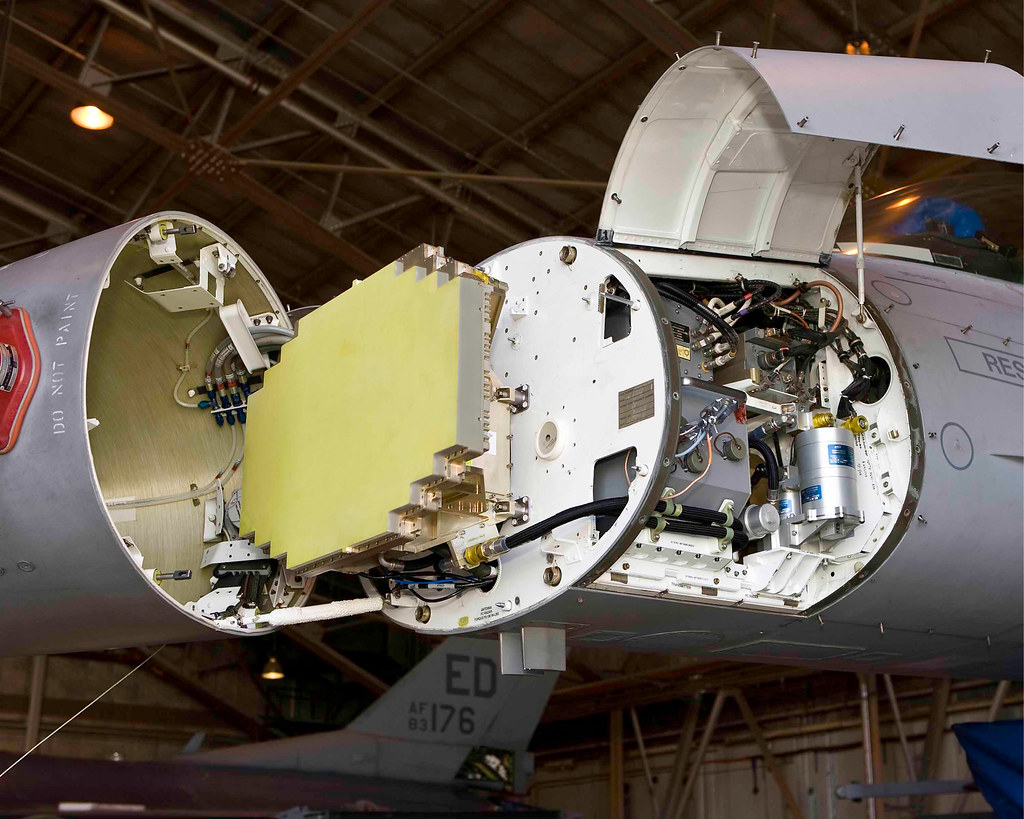The SC
ELITE MEMBER

- Joined
- Feb 13, 2012
- Messages
- 32,229
- Reaction score
- 21
- Country
- Location
AN/APG-81

Description: The AN/APG-81 is an advanced fire control radar developed by Northrop-Grumman for the F-35 Joint Strike Fighter (JSF). It features both air and surface modes and Active Electronically Scanned Array (AESA) antenna for enhanced performance. The APG-81 radar underwent rooftop integration range-testing phase entering flight testing on a Northrop-Grumman BAC 1-11 testbed aircraft in early 2005. The BAC 1-11 tested its air and surface modes. Northrop-Grumman handed over the first AN/APG-81 active electronically scanned array (AESA) fire control radar to F-35 Joint Strike Fighter (JSF) prime contractor Lockheed-Martin on March 3, 2005. APG-81 radar system will support air-to-air, air-to-surface and electronic warfare modes providing the pilot with all-weather precision targeting and advanced air-to-ground automatic target cueing.
The AN/APG-81 radar is a combination of the proven technologies from the F/A-22's APG-77 and the F-16E/F's APG-80 AESA radar systems. The APG-81 features features 1,000 transceivers with the ability to track aerial targets and moving targets on the ground. In the air surveillance mode can detect an airborne target of one square meter Radar Cross Section (RCS) at a range of 150 kilometers. Besides, can track 23 targets in 9 seconds while engaging 19 of them in 2.4 seconds.
http://www.deagel.com/Aircraft-Warners-and-Sensors/ANAPG-81_a001381001.aspx
http://www.deagel.com/Aircraft-Warners-and-Sensors/ANAPG-81_a001381001.aspx
the last sentence should be corrected to: engaging 9 targets, since the F-35 does not carry 19 missiles, maybe 9..
--------------------------------------------------------------------------------------------------------------------------------------------
KLJ-7A airborne AESA radar


KLJ-7A
During the 2016 Zhuhai Airshow, a new model called KLJ-7A was unveiled to the public. The KLJ-7A is an AESA radar with an reported range of 170km for a 3 m2 target, with the ability to track 15 targets and engage 4.
Radar modes
Data from: Janes Defence[1]
Data from: Jane's Defence [1]

Description: The AN/APG-81 is an advanced fire control radar developed by Northrop-Grumman for the F-35 Joint Strike Fighter (JSF). It features both air and surface modes and Active Electronically Scanned Array (AESA) antenna for enhanced performance. The APG-81 radar underwent rooftop integration range-testing phase entering flight testing on a Northrop-Grumman BAC 1-11 testbed aircraft in early 2005. The BAC 1-11 tested its air and surface modes. Northrop-Grumman handed over the first AN/APG-81 active electronically scanned array (AESA) fire control radar to F-35 Joint Strike Fighter (JSF) prime contractor Lockheed-Martin on March 3, 2005. APG-81 radar system will support air-to-air, air-to-surface and electronic warfare modes providing the pilot with all-weather precision targeting and advanced air-to-ground automatic target cueing.
The AN/APG-81 radar is a combination of the proven technologies from the F/A-22's APG-77 and the F-16E/F's APG-80 AESA radar systems. The APG-81 features features 1,000 transceivers with the ability to track aerial targets and moving targets on the ground. In the air surveillance mode can detect an airborne target of one square meter Radar Cross Section (RCS) at a range of 150 kilometers. Besides, can track 23 targets in 9 seconds while engaging 19 of them in 2.4 seconds.
http://www.deagel.com/Aircraft-Warners-and-Sensors/ANAPG-81_a001381001.aspx
http://www.deagel.com/Aircraft-Warners-and-Sensors/ANAPG-81_a001381001.aspx
the last sentence should be corrected to: engaging 9 targets, since the F-35 does not carry 19 missiles, maybe 9..
--------------------------------------------------------------------------------------------------------------------------------------------
KLJ-7A airborne AESA radar


KLJ-7A
During the 2016 Zhuhai Airshow, a new model called KLJ-7A was unveiled to the public. The KLJ-7A is an AESA radar with an reported range of 170km for a 3 m2 target, with the ability to track 15 targets and engage 4.
Radar modes
Data from: Janes Defence[1]
- Range While Search (RWS)
- Velocity Search (VS)
- Single Target Track (STT)
- Track While Scan (TWS)
- Dual Target Track (DTT)
- Situational Awareness Mode (SAM)
- Air Combat Mode (ACM)(with five sub-modes)
- Real Beam Map (RBM)
- Doppler Beam Sharpening (DBS)
- Ground Moving Target Indication/Ground Moving Target Track (GMTI/GMTT)
- Air to Ground Ranging (AGR)
- Synthetic Aperture Radar (SAR)
- Sea Single Target Track (SSTT)
- Beacon (BCN)
Data from: Jane's Defence [1]
- Frequency: X band
- Range:
- Total targets tracked: 10 in TWS (Track-While-Scan) mode (V1)
- Reliability:
- MTBF (Mean Time Between Failure): 220 hours
- MTTR (Mean Time To Recovery): 0.5 hours
- Weight: ≤120 kg
- Volume: 0.065 m3











